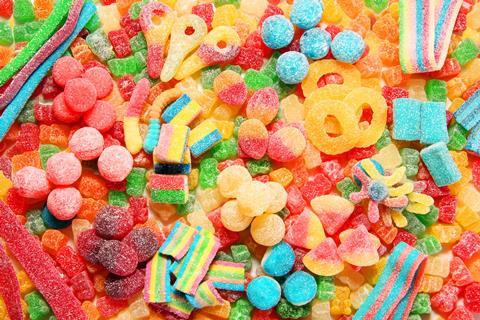
Talk about a sticky situation. Not only have confectioners faced the same supply chain challenges and cost pressures as everyone else, they’ve also had to get to grips with the ban on HFSS lines in impulse fixtures.
Under these circumstances, sugar confectionery has done well to cement 13.4% value growth on volumes down 2.7%. After all, volumes are down in most categories in this year’s Top Products as Brits tighten their purse-strings – and many, including chocolate, are declining at a faster rate.
In fact, many big-name makers of sweets have actually shifted more gummies, toffees, mints and the like: 33 of the 50 biggest brands are in volume growth.
This is partly down to suppliers’ responses to the HFSS clampdown, which came into force in October 2022. While chocolatiers have struggled to develop compliant products that hold the same appeal as their standard lines, non-HFSS sweeties are gaining ground.
These include Perfetti Van Melle’s Fruitella By The Sea and In The Snow jellies; Haribo’s Fruitilicious, Funtasia and Zingfest; and Rowntree’s first HFSS-compliant lines (see Top Launch, below).
What brands fall under the HFSS definition
“Rowntree’s non-HFSS range offers delightful indulgence without compromising on flavour, plus has no artificial flavourings, colourings or sweeteners,” explains Hayley Nixon, Nestlé senior brand manager for Rowntree’s & Polo.
The gummies feature “soluble corn fibre, which allows a reduction in the amount of sugar and increases the product’s fibre content compared to traditional sugar confectionery”, she adds. “Additionally, the range contains 5.5% fruit juice.”
This illustrates a key advantage of sugar confectionery over chocolate. It can swap out sugar and fat relatively easily without losing taste. Meanwhile, more than half of a typical milk chocolate bar is sugar and about a third is fat. No one has found a way to swap that for something less calorific without affecting taste or texture.
That doesn’t mean reformulation has been a silver bullet for sugar confectionery. The big names still have plenty of lines that fall under the definition of HFSS – meaning they have to contend with the supermarkets’ revised approach to merchandising.
“HFSS has changed the landscape, changing where retailers are locating products and making the category slightly less visible,” says Mark Roberts, marketing director at PVM. “On-the-go consumption is falling and we’ve seen a slight loss of single packs.”
Addressing these visibility issues has been a priority for all the big brands. So, they’ve invested in high-profile advertising and in-store marketing to attract more people down the confectionery aisles, while innovating to capture imaginations.
Take Haribo. The number one brand this year “launched two marketing campaigns focusing on what Haribo stands for: creating more moments of childlike happiness across the country” explains MD Jon Hughes.
He’s referring to the ‘Fun by Nature’ campaign with the Woodland Trust and a Halloween push to encourage adults to stock up for trick or treaters.
There’s more to come. “Investment will continue in 2024 and we’re excited to confirm we will bring a new TV creative to the UK next year,” Hughes adds.
Rowntress and Haribo sister brand
“Continued investment into our core range, exciting and innovative NPD combined with in-store and marketing investment will ensure that we remain the UK’s most loved treat and number one sweets manufacturer.”
It looks like money well spent so far. Haribo’s core gums and jellies have increased their lead at the top of the table with the greatest absolute value growth. Sales have soared £34.9m on volumes up 2.1%.
Rowntree’s and Haribo sister brand Maoam have turned in the second and third largest absolute gains. They’re up £11.4m and £8.2m respectively – although only Maoam is in volume growth, by 6.8%.
Just a few grand behind Maoam, also with an £8.2m gain, is Skittles. The Mars Wrigley brand “has experienced significant growth in the last four years and is on track to remain ahead of the category for a fifth consecutive year,” said senior brand manager Ryan Pardo-Roques in May. He was speaking at the launch of Skittles Desserts in Cherry Cheesecake, Strawberry Ice Cream, Choco-Orange Cake, Lemon Pie and Blueberry Tart.
His prediction was bang on. Skittles – which has seen plenty of innovation in recent years, including Chewies, Squishy Cloudz, Giants and Crazy Sours – has grown volumes 5% against an overall branded decline of 1%.
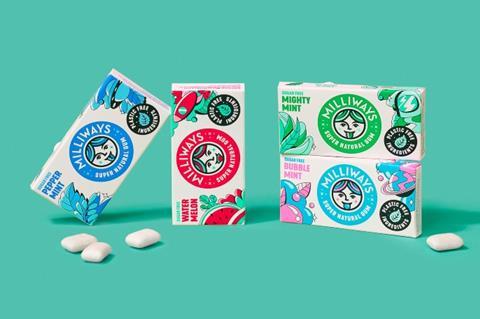
Sustainable chewing gum challenger Milliways has had an eventful 2023, to say the least. In April, it landed its first major supermarket listing, with the rollout of Peppermint and Bubblemint variants into Sainsbury’s Local. Three months later, the plastic-free brand closed a funding round £3m better off. Then in November, Milliways reformulated to offer longer-lasting and more intense flavours across its range. The brand’s now worth £374.5k, having shifted an extra 5,400 kilos of zero-sugar gum.
Not everyone has something to celebrate, however. In volume terms, Mentos and Maynards Bassetts have suffered the top 10’s greatest declines – by 24.3% and 13.1% respectively.
Maynards Bassetts’ performance was partly driven by “cost inflation combined with supply challenges”, says Susan Nash, trade comms manager at owner Mondelez.
“We have continued to work hard to meet strong consumer demand, and our focus has been on ensuring that our core range across our iconic brands shoppers expect to find on shelves is always available.”
Supply challenges to confectionery ingredients
Similar dynamics are behind Mentos’ losses. “Like many manufacturers, we’ve experienced challenges in the supply or ingredients and packaging materials and had to make decisions to remove production of some products,” explains Roberts at PVM.
“We had to focus on the core lines such as the mint and Fanta Mentos and pause production of others to ensure continuity of supply. It was a challenging time, but we’re overcoming it.
“Now supply is recovering, Mentos is in strong growth as is the rest of our portfolio. Our vision is to continue to give more people more little lifts in 2024,” he concludes.
PVM research earlier this year found 60% of people who buy sweets do so to boost their mood. Clearly, those little lifts matter.
Top Launch 2023
Rowntree’s non-HFSS gummies | Nestlé

Berry Hearts, Safari Mix, Gummy Bears and Jelly Snakes (rsp: £1.35/115g) are about as close to perfection as confectionery has come for a while. Not only do they taste great, but they’re also made with real fruit juice and contain 30% less sugar than similar sweets. That means they’re not subject to the HFSS regulations that have banned most confectionery lines from impulse fixtures. Sales have exceeded £7m since launch in January, says Nestlé, with Berry Hearts delivering nearly £3m of that.
Face off: Top Products Survey 2023 pits brands vs own-label
- 1
- 2
- 3
- 4
- 5
- 6
- 7
- 8
- 9
- 10
- 11
- 12
- 13
- 14
 Currently reading
Currently readingConfectionery - sugar 2023: HFSS rules keep candy on its toes
- 15
- 16
- 17
- 18
- 19
- 20
- 21
- 22
- 23
- 24
- 25
- 26
- 27
- 28
- 29
- 30
- 31
- 32
- 33
- 34
- 35
- 36
- 37
- 38
- 39
- 40
- 41
- 42
- 43
- 44
- 45
- 46







![Beans Face Off_RGB[18]](https://dmrqkbkq8el9i.cloudfront.net/Pictures/100x67/9/5/1/311951_beansfaceoff_rgb18_56926_crop.jpg)













































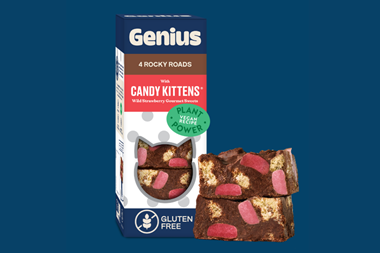
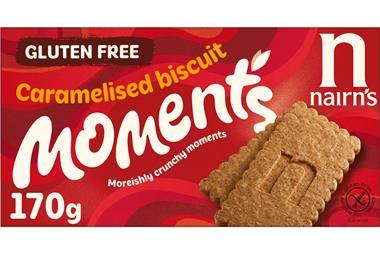

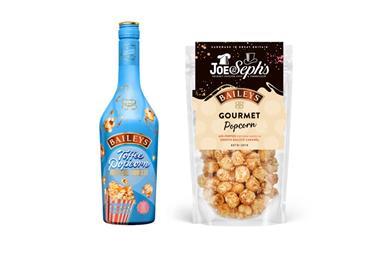







No comments yet